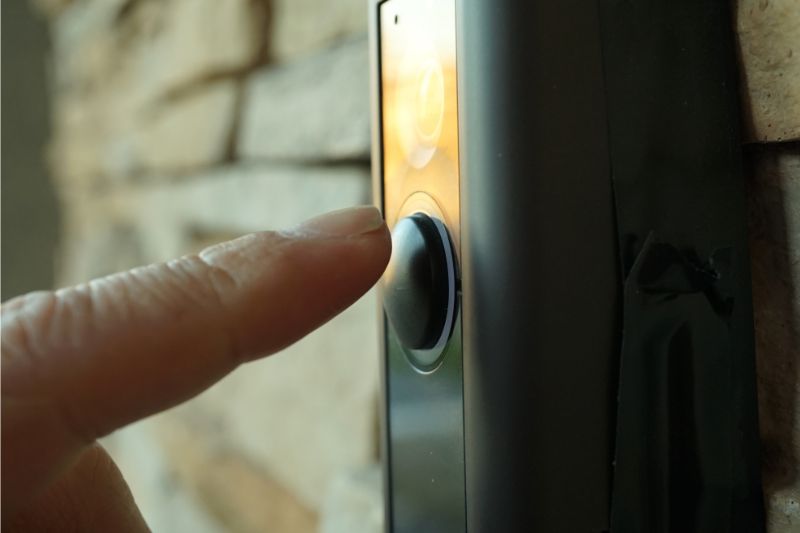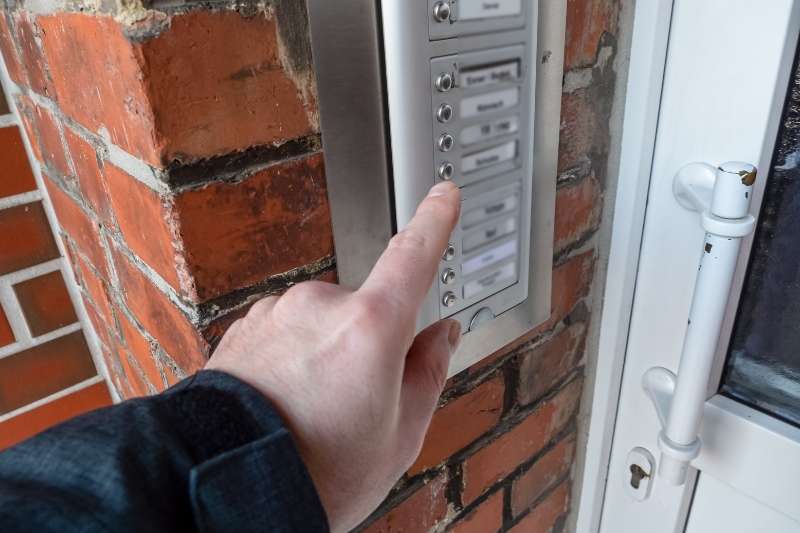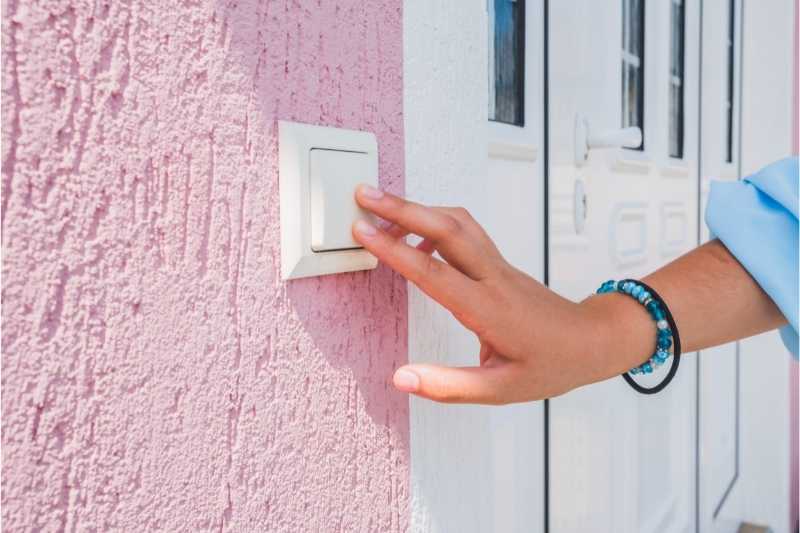Key takeaways:
- Types of multifamily doorbells include wired, wireless, or smart systems, each with different installation and feature options.
- Common limitations of many systems are lack of remote access, need battery upkeep, and can’t unlock doors.
- You should consider privacy, weather, installation, and your residents’ needs before choosing a system.
- A video intercom system may be a better alternative because it offers more security and convenience than a basic doorbell.

If you want to control entry to your apartment building, you might consider a door phone system. Although doorbells are usually designed for single-family homes, some types work for multi-tenant properties. But is a multifamily doorbell the best entry solution?
In this guide, you’ll learn what multifamily doorbells are, how they work, and whether you should invest in them for your apartment building.
This post covers:
- What is a multifamily doorbell?
- How do multifamily doorbells work?
- What are the three types of doorbells?
- Limitations of multifamily doorbells
- The best alternative to multifamily doorbells
What is a multifamily doorbell?
A multifamily doorbell is a device installed at the front entryway of a multifamily property that visitors can use to alert residents of their presence.
While traditional doorbells will alert residents through a noisy in-unit device, some can instead connect to WiFi and send an alert directly to a resident’s mobile device. Some multi unit doorbells also feature cameras and video door phone recording capabilities.
In most cases, residents can’t use the doorbell system to remotely unlock the door or gate for their visitors. So, multifamily doorbells are primarily used for communication and alerting rather than access management.
Watch how ButterflyMX works:
How do multifamily doorbells work?
Multifamily doorbells work by a visitor pressing a doorbell button on the base station, which can either be located at the property’s front entrance or a resident’s unit door.
When a visitor presses the doorbell, it sends an electronic signal to the resident’s device. This device can be either their smartphone or an in-unit device.
Some smart doorbells, such as doorbell phones, allow the resident to talk to the visitor as they would over a phone call. And doorbell systems with cameras may allow the resident to actually see who’s at the door or gate.

What are the three types of doorbells?
The three types of doorbells are:
1. Wired doorbells
Wired doorbells are considered traditional doorbells and are most commonly found in single-family homes. They consist of a base station that features a button for visitors to press.
Wired doorbells are low maintenance and easy to use. However, they do nothing for home security and are not designed for multifamily apartment buildings. While a resident could install a wired doorbell at their personal unit’s door, it’s not wise to install a wired doorbell system at the multifamily building’s front entrance.
2. Wireless doorbells
Similar to a door phone intercom, wireless doorbells transmit signals to an in-unit device when someone rings the bell.
Wireless doorbells are “almost smart” doorbells. They can feature various chimes, options for amplified sound range, and different frequency channels. They are also easy to install, can be powered by batteries, and require little to no maintenance.
However, they have all of the same flaws as wired doorbells. And generally, wireless doorbells don’t give residents any option to remotely unlock the door.
3. Smart doorbells
Smart doorbells are the best in the doorbell family. There are many different types of smart doorbells that include hardware such as IP door phones.
Smart doorbells often feature:
- Cameras that include night vision and zooming abilities.
- Live view.
- Mobile apps.
- Motion sensor capabilities.
- Easy installation.
While these features sound useful, they primarily benefit single-family homes more than they do multifamily properties. This is because doorbells inherently offer no remote access management capabilities. What’s more, most smart doorbells are not designed for multi unit buildings, and thus have only one button for visitors to press.

Can Ring doorbells be used in an apartment complex?
Ring doorbells are a popular example of a smart doorbell. The problem is that they may not be effective for multifamily properties. Residents need to control access to the building and their units as much as they need the ability to see and know who is visiting.
Limitations of multifamily doorbells
According to an FBI report, 62% of burglaries occur at residential properties. A doorbell, no matter how infused with smart technology, is not a good fit to control access at a multifamily property.
The reality is a good access control system eliminates the need for units to have private doorbells in the first place. With a good access control system, residents will already know who and when their visitors have arrived, eliminating the need for any type of doorbell at their unit’s door.
The limitations of multifamily doorbells are that:
- Most devices run on batteries. This decreases a device’s reliability and also is a major maintenance chore.
- Doorbells are only for visitors. Residents will not actually use a doorbell for their building. To access the building themselves, they’ll need another method.
- Doorbells don’t have door release mechanisms. A resident or second device would be required to physically open the door.
- There are no visitor management solutions. There is no way to remotely let a visitor or delivery person into the building with even the smartest doorbell.
- In-unit hardware is often required. While some smart doorbells work with residents’ smartphones, other models require some form of in-unit hardware to alert residents when they have a visitor.
The best alternative to multifamily doorbells
The best alternative to a multifamily doorbell is the ButterflyMX video intercom. Like traditional doorbells, ButterflyMX can alert residents when they have a visitor — and so much more.
The ButterflyMX video intercom features:
- Remote door release. When a visitor requests access, a resident can remotely unlock the door for them from anywhere. As a result, residents don’t have to be at home to let their visitors inside.
- Cloud-based technology. ButterflyMX operates with cloud-based software, meaning you can manage the system from anywhere and store data in the cloud.
- Video calling. The video intercom’s built-in camera lets residents speak with visitors at the entrance and visually confirm who’s requesting access. And best of all, residents can answer video calls on their mobile devices rather than on clunky in-unit doorbell camera with monitors.
- Smartphone-based access. Residents can open the door for themselves by swiping in the ButterflyMX mobile app. Visitors can also use their smartphones to gain access if a resident sends them a Visitor Pass ahead of time.
- Visitor management. Unlike a multi-unit doorbell, the ButterflyMX video intercom is a visitor management solution because residents can grant access from afar with just the push of a button.






